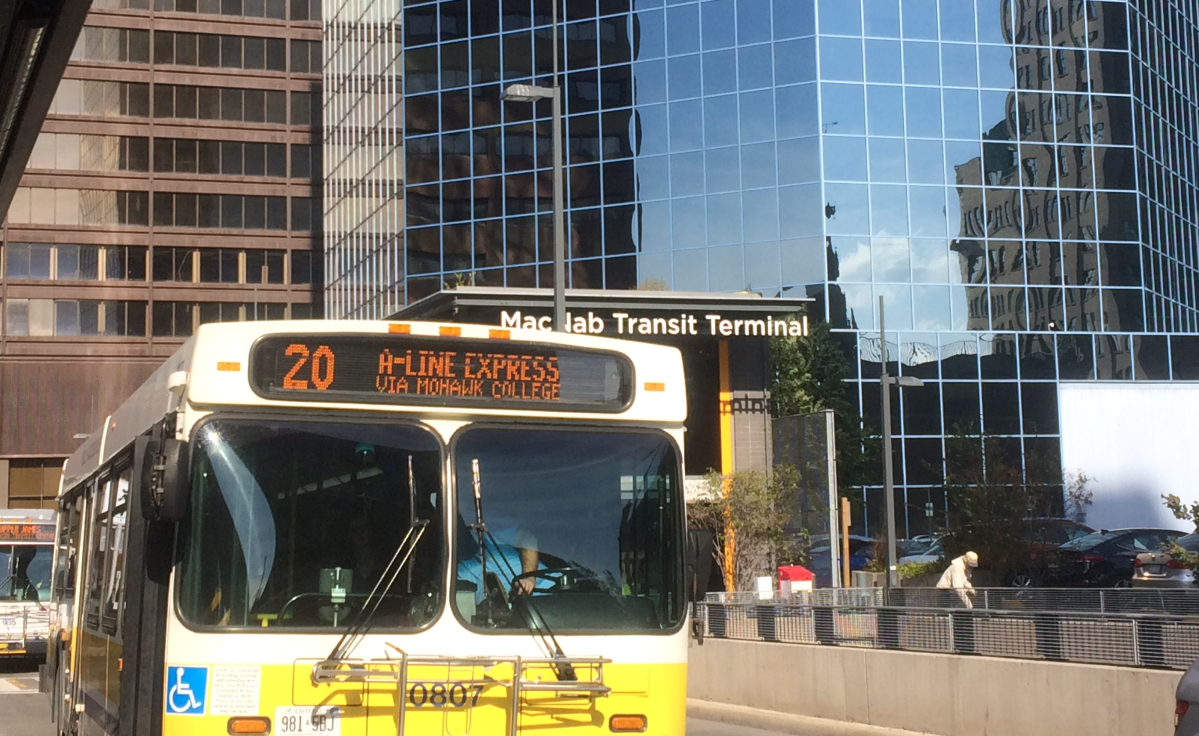Hamilton’s transit system will ramp up service again after months of reduced capacity and frequency due to the COVID-19 pandemic.

Starting Sept. 6, the HSR will begin operating at a “summer level” of service with more frequency of buses on most routes, as well as allowing buses to operate at 100 per cent capacity.
That will allow 30 people to ride a regular 40-foot bus, and 50 people on an extended or “articulated” 60-foot bus.
Transit had been running at a reduced frequency, with caps on riders since the beginning of the pandemic, although capacity on buses had increased to two-thirds once plastic shields were installed on all buses to protect drivers.
Debbie Dalle Vedove, the city’s director of transit, said the changes are being made to accommodate passengers’ needs, based on current and near-term projected ridership levels.
“This should help with minimizing pass-bys and more opportunity for customers to access the service,” said Dalle Vedove.
Increasing passenger capacity and the frequency of routes also coincides with high school students returning for “adjusted” half-day schedules, although it’s still unclear exactly how many students will be returning for in-person classes.

“We’re trying to be as flexible as we can as we get information,” said Dalle Vedove. “We’ve bumped up our school extras so that they’ll be out there in the mid-day so that they can take care of the excess capacity requirements as children are coming out of school.”
“At this point in time, we’re not sure what that’s going to look like — how many parents are going to be sending their children back to school — so we’ll be closely monitoring that to ensure that we do have adequate service out there.”
Some pandemic-related measures that will remain in place include mandatory face coverings for all HSR riders, with the exception of children under the age of two and people with a medical condition that prevents mask-wearing.
Compliance with the mandatory mask policy has been high, according to Dalle Vedove, which she attributes to the city-wide mask bylaw.
- Trudeau says ‘good luck’ to Saskatchewan premier in carbon price spat
- Canadians more likely to eat food past best-before date. What are the risks?
- Hundreds mourn 16-year-old Halifax homicide victim: ‘The youth are feeling it’
- On the ‘frontline’: Toronto-area residents hiring security firms to fight auto theft
“You can’t go anywhere anymore without having a mask, so it’s becoming more commonplace. Initially, it was … some resistance to wearing masks and it wasn’t mandatory, but we really are seeing a high level of compliance.”
Due to the pandemic, there are only about half as many people riding the HSR compared to the same period last year.
Dalle Vedove notes that they are keeping an eye on ridership levels to accommodate any increase in demand to prevent overcrowding on the more popular routes.
“We will be monitoring it extremely closely to ensure that on those particular routes — that maybe at certain times of the day when it is a little bit busier — that we do supplement with extra service, so that we’re not going back to the days of people crammed on the bus like sardines. We’re still working within the fundamental principles around maximizing physical distancing and the wearing of the face mask to ensure that everyone is safe and people are feeling comfortable and that they are safe riding with us.”
Details on the impacted routes and changes to service can be found on the city’s website.





Comments